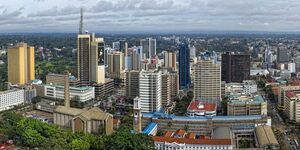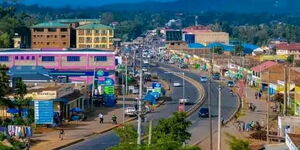According to the UN World Urbanization Prospects, Nairobi's 2020 population is estimated at 4,734,881 which represents a 3.88% annual change from 2015 where it stood at 821,369.
Nairobians live in different estates based on their standards of living. Over the years, certain estates that were associated with glamour and stature have slowly lost their glory.
Here are some of the estates that were held in high esteem in the early years before they were run down by mismanagement.
South C
South C was allocated by the colonial government between 1956 and 1957 to Asians. Originally planned to accommodate a small number of units with controlled development, the neighbourhood now hosts thousands of inhabitants.
Back in the mid-1900s the estate consisted of crescent courts and no fences or perimeter walls. What made it even more appealing was its proximity to the Nairobi National Park, wild animals would freely graze in the area, peacefully co-existing with the residents.
However, as independence rolled in, so did new inhabitants. The area was more accessible due to the tarmacking of roads and house owners opted to demolish their bungalows in favour of high-rise flats to rake in rental income.
The building codes have also been disregarded over the years - where the buildings should not go above two storeys, there are highrise buildings of up to 11 storeys.
Additionally, there are three informal settlements within the once-coveted neighbourhood. Makeshift structures have cropped up making up Cotton slums, Bypass Slum and Mataa village.
Services have not grown in proportion with the population as residents have encountered major water shortages attributed to cartels in the area.
Following numerous complaints by residents of South C who had for years endured dry taps, Nairobi Metropolitan Services (NMS) Director-General Mohamed Badi deployed his engineers to assess the situation.
In the fact-finding mission, the engineers found that the pipes which were supposed to supply water to South C estate had been cut, stuffed with mattresses, and sealed back.
In addition, the residents complain of regular bursting of the sewage system as well as flooding of their homes.
Several estates in Eastlands were established in the colonial era, with the British colonial government between the 1920s and 1960s to provide affordable housing for Africans in Kenya’s rapidly growing capital city. Others sprung up during the African-led regimes but failed to maintain their high stature.
Kaloleni estate
Kaloleni estate may not look like it, but it is a wealth of history. The estate has always been a cosmopolitan.
Famous personalities like Kenya’s founding President Jomo Kenyatta, Tom Mboya and former Ugandan President Milton Obote at one point convened various social and political meetings there.
Among the known personalities who have lived here include, former Vice-President Moody Awori, former cabinet minister Fred Gumo, the late businessman Gerishon Kirima and the first African mayor of Nairobi Charles Rubia.
Apart from being an anchor to many politicians' stories, it was also known as the hub of football talent.
Football legends such as the late Mark Obibo, Joseph Weke, Father Okoyo Paplaga, Katele, Joseph Adach, the late coach Ojes, Kadanse Mudanda, and Ambesh Kapelo lived in the estate popularly referred to as Ololoo.
Thousands of Nairobians still call the estate home even though it may have been run down due to mismanagement.
Makongeni Estate
Established for Kenya Railways middle-level workers during the early 1970s, what made the houses in this estate stand out were the spacious compounds.
When completed, those who chose to live here were greeted with freshly painted houses that had neat hedges and the well-tended flowerbeds.
Due to their features, the units were some of the most sought after living quarters in the country.
However, years of mismanagement at the State Corporation saw the housing projects fade out and the maintenance not adhered to.
Buru Buru Estate
Built for business people, government officials, professionals, and a few expatriates on short-term assignments in the country, Buru Buru estate was an enviable middle-class estate in Nairobi.
In the 1980s, the estate boasted of beautifully lined white maisonettes with orange brick tiles housed in sizable compounds designed in courts.
However, over the years, things changed as the extensions and business structures replaced the peaceful and serene nature of the estate.
"How Buru Buru has fallen. I grew up there in the '80s and it was pretty nice back then. A cream of the crop estate in Eastlands those days, unlike the way it looks today," a resident once observed.












